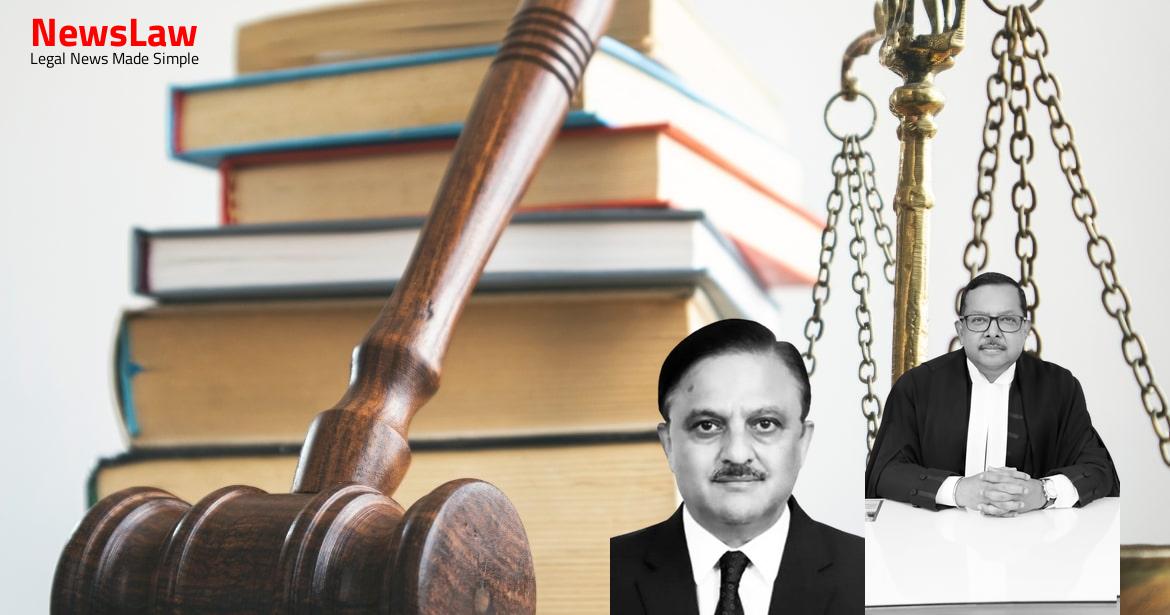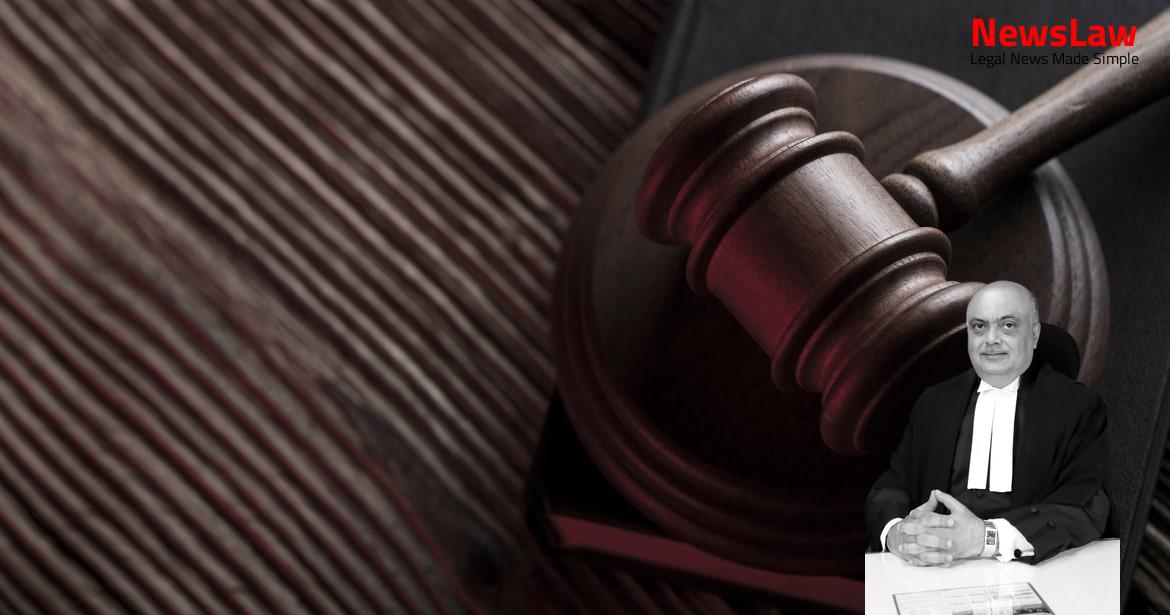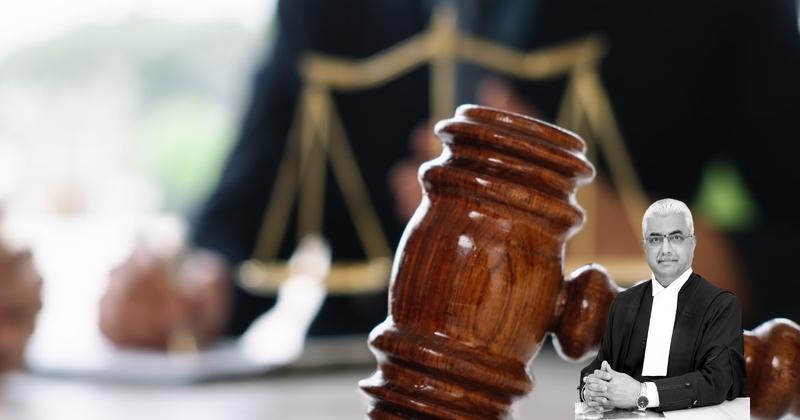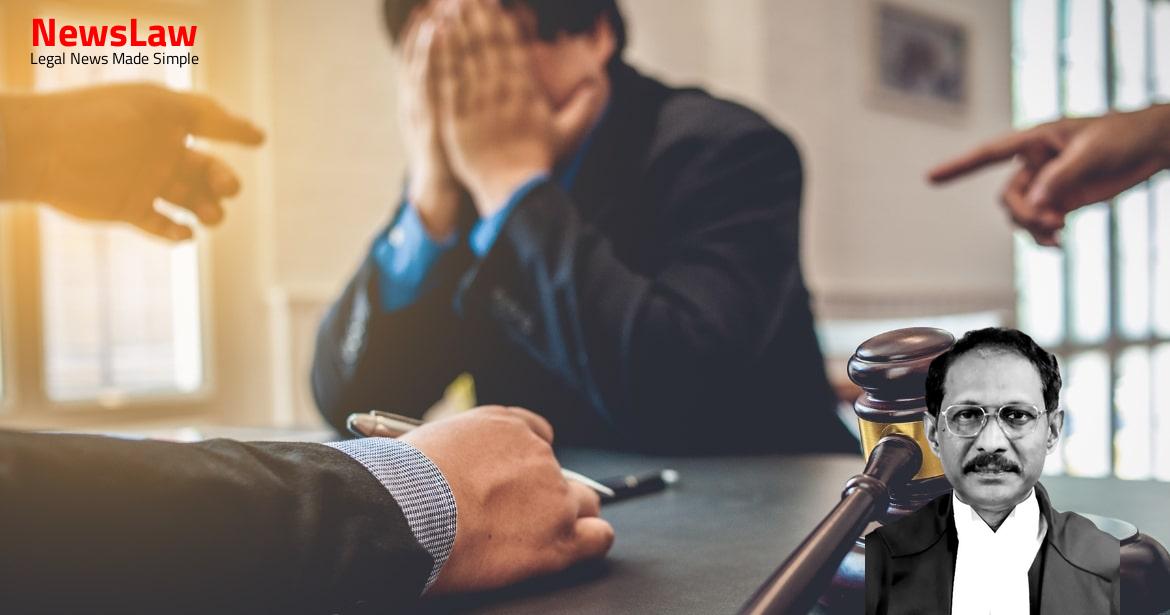Delve into the intricacies of proving firearm offences in a recent court judgment. The analysis focuses on the legal challenges faced by the court, including the reliance on witness testimonies and the absence of a ballistic expert opinion. Stay tuned to unravel the complexities of this legal case and its implications on criminal justice proceedings.
Facts
- Appellant Ram Singh was convicted under Section 301 read with Section 302 of the Indian Penal Code, 1860 (IPC)
- The appeal is directed against the judgment and order dated 05.02.2018 passed by the High Court of Judicature at Allahabad in Criminal Appeal No. 1611 of 1983
- The High Court confirmed the conviction and sentence imposed on the appellant by the Additional Sessions Judge in Sessions Trial No. 297 of 1982
- For the offence under Section 301/302 IPC, the appellant was sentenced to undergo imprisonment for life
- For the offence under Section 307 IPC, the appellant was sentenced to undergo rigorous imprisonment for five years, with both sentences to run concurrently
- PW-1 stated that he had voted against the wife of Ram Singh in an election.
- Ram Singh fired from his country-made pistol instantly after the election-related altercation.
- No villager witnessed the accused running away after the incident.
- Mother died due to a gunshot wound.
- PW-5, the Pradhan of the village, saw the accused in the lantern light during the evening.
- The High Court dismissed the appeal filed by the appellant.
- The informant reported that the appellant Ram Singh, accompanied by Lala Ram, came to his residence and both cried.
- There were lacerations on the left lung and heart of the deceased.
- Accused Lala Ram challenged PW-1 and accused him of creating mischief.
- Inquest report mentioned the seizure of pellets and a tikli from the deceased’s wound.
- Ram Singh denied the accusations during his examination under Section 313 of Cr.P.C.
- Several villagers came after hearing the gunshots.
- Two accused fled towards the north after the incident.
- Ram Singh was holding a country-made pistol during the altercation.
- The informant’s son had a prior scuffle with accused Ram Singh which was reported to the police.
- The second accused, Lala Ram, was acquitted due to a benefit of doubt.
Also Read: Entitlement to Interest on Delayed Refund of Duty Drawback
Arguments
- Learned counsel for the appellant argued that there are gross contradictions in the testimony of the prosecution witnesses.
- The so-called eyewitnesses were not reliable at all as there was no ballistic report linking the pellets to the pistol allegedly used by the appellant.
- The appellant was falsely implicated in the case due to political rivalry.
- The counsel highlighted that despite initially only focusing on converting the conviction from Section 302 IPC to Section 304 IPC, he had later expressed intention to argue for acquittal as well, which was overlooked by the High Court.
- The recovery of the country-made pistol allegedly used by the appellant was not proven.
- The appellant and the acquitted co-accused had similar evidence against them, indicating a flaw in the trial court’s decision.
- Crucial witnesses were not examined, and ballistic examination of the pellets found at the crime scene and in the deceased’s body was not conducted.
- The trial court’s error in convicting the appellant while acquitting the co-accused Lala Ram was emphasized, pointing to inconsistencies and biased witnesses with past enmity against the appellant.
- The respondent-State argues that the appellant was rightfully convicted based on incriminating evidence.
- Both the Sessions Court and the High Court had correctly convicted the appellant.
- The incriminating evidence against the appellant supports the conviction.
Analysis
- The evidence presented by eyewitnesses has serious lacunae and lacks credibility.
- Witnesses give conflicting versions of the events leading to inconsistencies.
- Non-recovery of the weapon of crime does not necessarily discredit the prosecution’s case.
- Absence of ballistic report, non-examination of ballistic expert, and inconsistencies in witness testimonies raise doubts in the case.
- Omission to examine material witnesses and discrepancies in witness accounts impact the strength of the prosecution’s case.
- Previous enmity between the victim and accused is highlighted, suggesting possible bias in witness testimonies.
- The prosecution fails to provide adequate explanations regarding key evidence such as pellets found in the victim’s body.
- Despite direct eyewitness accounts, the prosecution’s case is not proven beyond reasonable doubt.
- Inconsistencies and omissions in evidence weaken the prosecution’s argument, leading to the benefit of doubt for the appellant.
- The prosecution failed to furnish an explanation for omissions in presenting evidence, including the non-examination of a ballistic expert.
- The opinion of a ballistic expert is crucial in cases involving firearm injuries to connect the accused with the crime.
- Failure to produce expert opinion affects the credibility of the prosecution case, especially when direct evidence is unsatisfactory.
- Cases where injuries suggest firearm infliction should involve a ballistic expert for corroboration.
- In cases with eyewitness evidence against multiple accused, the court cannot convict one while acquitting the other.
- Non-examination of a ballistic expert has varying impacts on different cases depending on the credibility of eyewitness accounts.
- The absence of weapon seizure and expert examination can dent the prosecution’s case, leading to doubts and benefiting the accused.
- When a co-accused is acquitted based on the same evidence, doubts about the involvement of the accused must be considered by the court.
- In cases of lingering doubt about the accused’s guilt, the benefit of doubt should be given to the accused.
Decision
- The judgment and order of the Additional Sessions Court dated 28.05.1983 and the judgment and order of the High Court dated 05.02.2018 are set aside and quashed.
- The appellant is directed to be released from jail forthwith, if not required in any other case.
- The appeal is allowed.
Case Title: RAM SINGH Vs. THE STATE OF UTTAR PRADESH (2024 INSC 128)
Case Number: Crl.A. No.-000206-000206 / 2024



